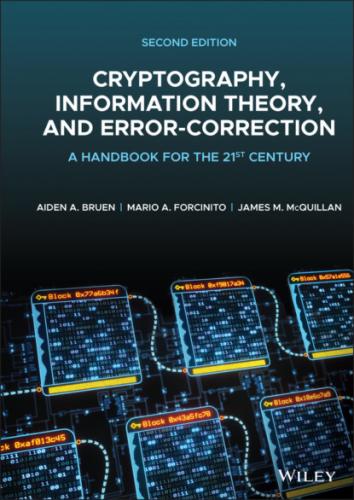Similarly, if
Let us see what happens when we encode the letter “k,” which has numerical value 10.
Reaching the reflector, we get
Therefore, the first cipher text character corresponds to 7, and is thus is “H.”
Now, we must update the rotor settings:
If the settings were such that
As mentioned above, an interesting aspect about the Enigma enciphering scheme is the fact that deciphering a message follows the exact same process.
2.8 Modern Enciphering Systems
With the advent and ubiquity of computer‐based encryption systems, cryptanalysis has shifted the emphasis from attacks based purely on the ciphering scheme to attacks on other aspects of cryptosystems, such as authentication, key exchanges, and digital signatures. We will detail some of these techniques later in the book, after the basis for modern ciphers, authentication, and digital signatures are developed.
2.9 Problems
1 2.1 Encipher the plain text message “encode” using the following Cipher: schemes:Caesar cipher with .Caesar cipher with .(See Solution 2.1.)
2 2.2 Using the Scytale cipher with k = 2, encipher the plain text message “encode”. Compare your results with those from Problem 2.1. (See Solution 2.2.)
3 2.3 Decode the following cipher text, given that it has been produced by a Caesar cipher: JRYYQBAR (See Solution 2.3.)
4 2.4 Is any additional security gained by enciphering a message using two monoalphabetic ciphers with different keys in succession? (See Solution 2.4.)
5 2.5 Encipher the first sentence of Homer's “Odyssey” using a Scytale cipher with key = 7.TELL ME O MUSE, of that ingenious hero who traveled far and wide after he had sacked the famous town of Troy.(See Solution 2.5.)
6 2.6 Explain how frequency distribution can be used to determine if a given entry of cipher text was produced using a substitution cipher or a transposition cipher.(See Solution 2.6.)
7 2.7 Use the Vigenère cipher with keyword “ODYSSEY” to encipher the first sentence of Homer's “Odyssey.” Compare the cipher text with the results obtained from Problem 2.5. (See Solution 2.7.)
8 2.8 Decipher the message below, using the fact that the keyword ‘CIPHER’ was used to encode it.VPXZG ZRTYM JGIHF XFDZT HOZHW CLOEQ EHALV MMNDS IF(See Solution 2.8.)
9 2.9 Suppose Caesar sends a message to one of his generals, and the message contains only one letter. What can you say about the message's security and why? (See Solution 2.9.)
10 2.10 Does the Enigma machine perform substitution enciphering or transposition enciphering? Explain. (See Solution 2.10.)
11 2.11 Ignoring the plugboard, how many possible initial settings are there for the three‐rotor Enigma machine? (See Solution 2.11.)
12 2.12 Using the rotor and reflector permutation sets, along with the initial rotor settings, from the example in Section 2.7, encipher the following message: “move out!”. (See Solution 2.12.)
13 2.13 Find the period of the given cipher text, given that it was enciphered by the Vigenère cipher (see Section 2.6).LVCKO GXKRR ITSKC XIPOG GZLCB GYXFC AYGDI RBMAU CFYAC FIPGM RRXFO JPSIB WELDI QDJPO USORA IHGCX PSFSD MMXEL NEJSX RVIJE GISXA KRZOH MXI (See Solution 2.13.)
14 2.14 Using the results of Problem 2.13, determine the keyword used to encipher the passage above (See Solution 2.14.)
15 2.15 Use the Enigma Machine with initial settings given in Section 2.7 to decipher the following message: YDDMYU (See Solution 2.15.)
16 2.16 Take
